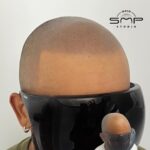
Unveiling Regenerative Treatments for Degenerative Osteoarthritis
Osteoarthritis (OA) is a degenerative joint disease that affects millions worldwide, leading to pain, stiffness, and a significant reduction in the quality of life. Traditionally, treatments have focused on managing symptoms rather than addressing the root causes. However, the tide is turning with the advent of regenerative medicine, offering new hope to those suffering from this debilitating condition.
Understanding Osteoarthritis: The Old Enemy
To appreciate the breakthroughs in treatment, we must first understand what we’re up against. Osteoarthritis is the most common form of arthritis, characterised by the breakdown of cartilage, the cushiony tissue at the ends of bones. As the cartilage wears away, bones rub against each other, causing pain, swelling, and difficulty in movement. While OA can affect any joint, it most commonly affects knees, hips, hands, and the spine.
Risk factors for OA include age, obesity, joint injuries, genetics, and certain occupations that put excessive stress on particular joints. Traditionally, treatments have included pain relief medications, physiotherapy, lifestyle changes, and in severe cases, joint replacement surgery. However, these treatments often provide only temporary relief and don’t halt the disease’s progression.
A New Dawn: Regenerative Medicine
Regenerative medicine is a groundbreaking field that aims to repair or replace damaged cells, tissues, or organs. In the context of OA, the goal is to regenerate the lost cartilage, thus reversing the disease process. This approach contrasts sharply with traditional treatments that only manage symptoms.
- Stem Cell Therapy: Harnessing the Body’s Repair Mechanisms
Stem cells are the body’s raw materials, cells from which all other cells with specialised functions are generated. In stem cell therapy, these cells are used to regenerate damaged cartilage. The procedure typically involves extracting stem cells from the patient’s own body – such as from the bone marrow or fat tissue – and injecting them into the affected joint.
Research has shown promising results, with many patients experiencing reduced pain and improved joint function. However, stem cell therapy is still in its infancy, and more research is needed to fully understand its potential and limitations.
- Platelet-Rich Plasma (PRP) Therapy: A Natural Approach to Healing
PRP therapy involves injecting a concentration of a patient’s own platelets into the affected joint. Platelets are a type of blood cell known for their role in healing wounds. The idea is that injecting these into the OA-affected joint will stimulate the body’s natural healing processes.
This treatment has gained popularity due to its minimally invasive nature and the use of the patient’s own biological material, reducing the risk of adverse reactions. Studies have shown that PRP therapy can reduce pain and improve joint function in OA patients, though, like stem cell therapy, more research is needed.
- Tissue Engineering: Building New Cartilage
Tissue engineering is another exciting avenue in regenerative medicine. This approach involves creating new cartilage in a lab, which can then be implanted into the patient’s joint. Scientists use a combination of cells, scaffolding materials, and growth factors to grow cartilage that closely resembles the patient’s own tissue.
While still experimental, tissue engineering has the potential to provide a more permanent solution to cartilage degeneration in OA. The challenge lies in creating tissue that integrates seamlessly with the patient’s body and functions like natural cartilage.
The Road Ahead: Challenges and Potential
Despite the promise of these regenerative treatments, there are challenges to overcome. One major hurdle is the cost. These therapies are often expensive and not yet widely available. Additionally, there’s a need for more extensive clinical trials to establish their efficacy and safety over the long term.
However, the potential benefits of regenerative treatments for OA are immense. They offer a chance not just to manage symptoms but to fundamentally alter the course of the disease. For millions suffering from OA, this could mean a return to an active, pain-free life.
Conclusion: A Hopeful Future
The development of regenerative treatments for osteoarthritis marks a significant shift in our approach to this age-old ailment. No longer are we limited to simply managing symptoms; we’re now looking at potentially reversing the damage. While there’s still much to learn, the progress made so far provides hope for a future where OA is a manageable condition, not a life sentence of pain and immobility.


















